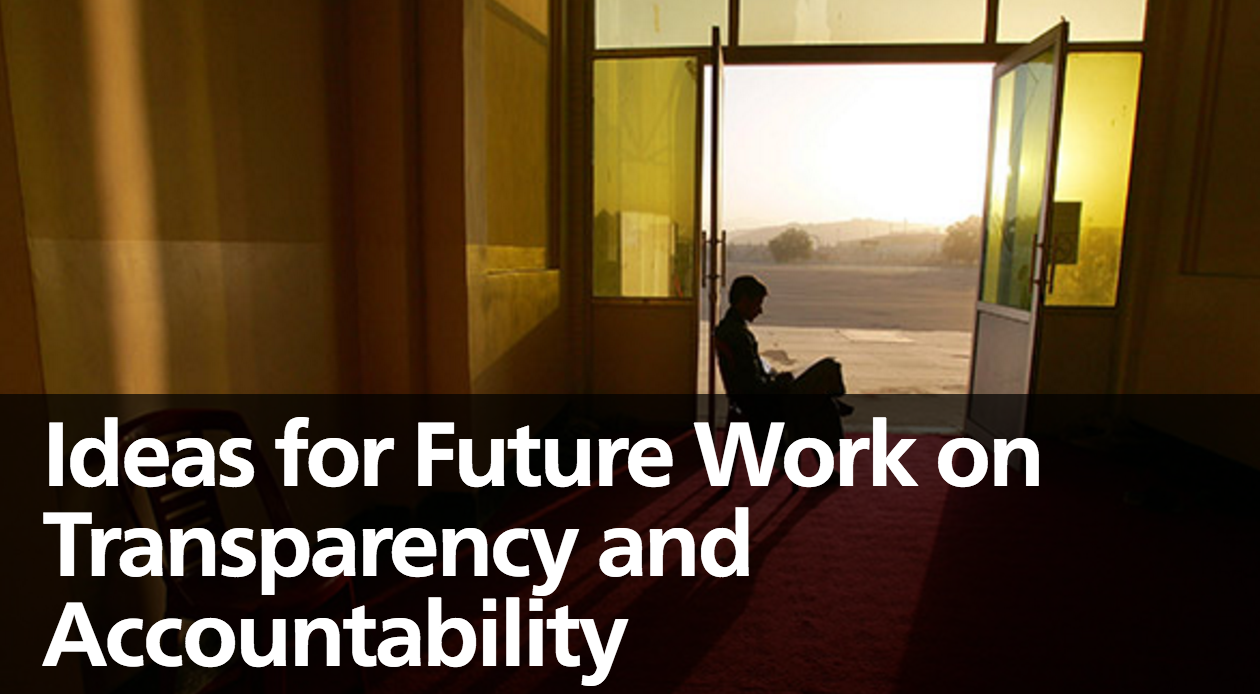NEWS
May 2, 2016

IN BRIEF
By: Blair Glencorse, Executive Director, Accountability Lab. This article was originally published by the Carnegie Endowment for International Peace, in a collection of twenty think pieces by leading scholars and activists on the future of the transparency and accountability movement, commissioned by the Transparency and Accountability Initiative (T/AI) and curated and edited by Thomas Carothers. Getting Closer to the Ground Progress in the field of transparency and accountability has been patchy. Funders have focused largely on transparency (and to a lesser extent accountability), and the associated efforts around open government. This has been valuable—transparent information should provide the basis for more effective policymaking and [...]
SHARE
By: Blair Glencorse, Executive Director, Accountability Lab. This article was originally published by the Carnegie Endowment for International Peace, in a collection of twenty think pieces by leading scholars and activists on the future of the transparency and accountability movement, commissioned by the Transparency and Accountability Initiative (T/AI) and curated and edited by Thomas Carothers.
Getting Closer to the Ground
Progress in the field of transparency and accountability has been patchy. Funders have focused largely on transparency (and to a lesser extent accountability), and the associated efforts around open government. This has been valuable—transparent information should provide the basis for more effective policymaking and service delivery. Efforts around freedom of information and citizen monitoring of budgets, for example, have led to tangible, positive changes. At the multilateral level, initiatives like the Open Government Partnership have truly pushed the field forward and created frameworks for countries to monitor progress and share lessons.
At the same time, as T/AI has itself reported, the longer-term impact of this work in improving people’s lives has been mixed. Often, assumptions are untested, processes of change are vague, and contexts are insufficiently analyzed. Equally, efforts to show how transparency can then lead to greater accountability are often misunderstood or missing, and “political will” still seems difficult for us to understand and to generate. Technology frequently becomes the goal, rather than part of a larger strategy to engage people and governments in effective ways. Lessons from what works are often not shared and are rarely implemented. In short, the shift from open government to open governance is very much in its nascent stages.
Drawing on Accountability Lab’s experience in helping young people in developing countries develop T&A tools and link practice and learning to larger strategies and donor processes, I would recommend the following topics for greater T/AI future focus.
Using the Local Context
The T&A field still lacks a real, highly ethnographical approach to context (see Quaggiotto) and a rigorous, deeply nuanced understanding of the relationships and incentives that lead to behaviors within a specific political space. We need to work with organizations that build trust in meaningful ways (let’s think religious organizations or labor groups, not just NGOs), can map local assets in nontraditional manners, and use better and different types of data to make decisions (less surveys and statistics and more sense making of narratives, social media mining, and so on).
Understanding Varied Pathways for Change
The frequent emphasis on theories of change has led to linear mental models. The increasing emphasis on adaptive learning is useful, but we still tend to test singular assumptions. Our experience indicates that donors may want to move toward ways to test multiple theories of change at the same time (for example, more design thinking, rapid prototyping, and accountability incubators) as a way to discover next-generation ideas and push the field as a whole forward.
Building Accountability Movements
Too much T&A work is tactical and projectized rather than strategic and collaborative (see Fox). T&A efforts in a given context are frequently disparate and fail to cohere. The stakeholder ecosystem (see Halloran) is often not fully appreciated. Accountability must be understood as a generational movement that will require long-term, collective, and often nonlinear support. This means really working to bolster a shared shift in thinking and ensuring that change-makers understand that there is a community to support them and from which they can learn.
Move Toward Integrity
The inevitable result of the use of words and phrases like transparency, accountability, and even open government is that the starting point is a focus on monitoring, compliance, and enforcement. This makes the politics and the energy of the change process difficult from the outset. Reframing this work as building integrity and “naming and faming” rather than “naming and shaming” is far more constructive. It allows us to expand zones of effectiveness and support individuals who are inclined to reform and create a compelling change narrative. Donors should look for organizations that are thinking in these ways and mobilizing youth behind them.
Rethinking Multidonor Approaches
Efforts like T/AI and Making All Voice Count have been important in furthering understanding of the field, but often operate as echo chambers among traditional development actors. We are finding that the forward-thinking elements of the private sector, for example, are increasingly interested in how to build integrity (see their role in pushing for OGP in Pakistan). A useful step might be to bring in these potential donors in a more coherent manner, which would also allow processes like OGP to better operationalize.
Read the contributions from other leading scholars and activists on the future of the transparency and accountability movement here.
Photo: Getty Images
